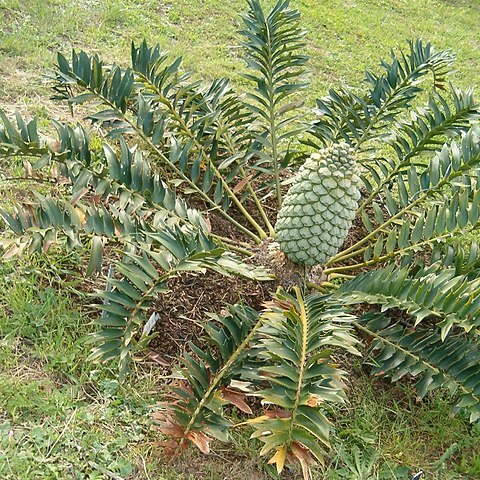Plant dioecious, palm-like. Stem aerial or decumbent, 0.5-3.5 m long, unbranched or branched from base, covered by alternating series of woody bracts and persistent, swollen, truncated leaf bases. Leaves petiolate, pinnate with rachis recurved; median leaflets lobed, pungent-pointed, margins not markedly rolled under abaxial surface; reduced in size towards base of rachis. Cone Feb.-Dec., single, appears sessile, green. Male cone lanceoloid. Female cone cylindric to ovoid, broader than male, facets flattish, glabrous.


